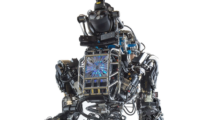NASA is launching an ambitious mission to study the origin and the nature of black holes. The mission titled Imaging X-Ray Polarimetry Explorer envisages sending three space telescopes with powerful cameras which will be able to measure the polarization of the cosmic X-rays produced by the black holes.
Black Holes, neutron stars, and pulsars are some of the most intense cosmic objects where the laws of physics cease to exist, and gravity, magnetism, and radiations are at its extreme. It is impossible to understand what is happening around these extreme astronomical objects. The NASA mission will unravel the hidden mysteries by studying the polarization of the X-Rays emitted by these massive objects.
Black Holes heat the surrounding gasses to millions of degrees. The gas remains in a plasma state, and the components of atoms are broken to its individual state. The traumatized gas produce high energy X-rays which are in fact polarized and vibrate only in one direction. The extent of polarization can be measured by the telescopes aboard the Imaging X-Ray Polarimetry Explorer mission. It will enable the scientists to provide answers to the workings and the conditions in such extreme environments. Though it is not possible to visualize the area around a black hole, by studying the polarization of the X-rays produced, a lot can be known about these enigmatic objects.
NASA is known for launching observatories and had studied more than 14 proposals before finalizing the IXPE. The mission was selected for providing most answers about the fundamentals of cosmos. The XIPE mission is slated to be launched in 2020 and will carry a price tag of $188 million. The Mission will be headed by Martin Weisskopf of NASA’s Marshall Space Flight Center. The spacecraft and the mission coordination will be provided by Ball Aerospace, Broomfield, Colorado. The Italian Space Agency will provide the ultra sensitive polarization X-ray detectors.
The central focus of NASA has changed especially after facing a cash crunch with its budget being curtailed. The incumbent American President, Donald Trump has made it clear that NASA budget will be further cut. Therefore NASA is seeking resort to low cost missions which will answer questions and contribute to the agency’s astrophysics and heliophysics programs.




